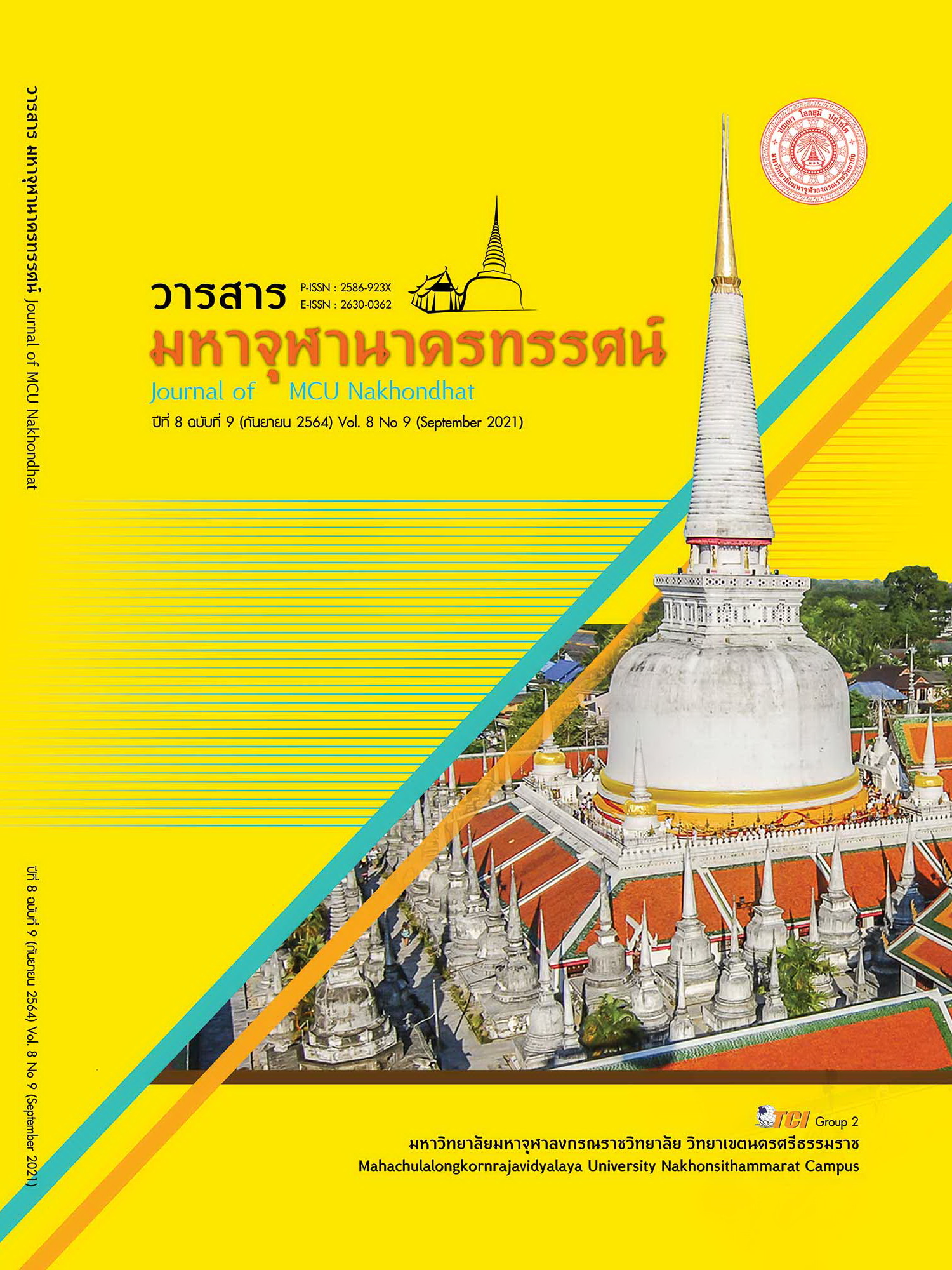DISCOURSE STRUCTURE AND CULTURAL REFLECTION IN THE COOKING PROGRAM “HIGH ZONE KITCHEN” HOSTED BY M.L. KWANTIP DEVAKULA
Main Article Content
Abstract
The objectives of this qualitative research article were two important objectives in the cooking program “High Zone Kitchen”, hosted by M.L. Kwantip Devakula 1) to study the discourse structure; 2) to study the cultural reflection in the program. The data collected for this research was drawn using purposive sampling. 20 episodes of the cooking program "High Zone Kitchen", shown from March 26th to October 15th 2020, were selected. The total length of the episodes combined is 3 hours 44 minutes and 9 seconds. The results of research show that the discourse structure in M.L. Kwantip Devakula’s cooking program consists of 3 main components: the lead section of the program; the content section showing the cooking process; and the end section of the program. However, each of these core components has different sub-elements. In the cultural reflection part, it was found that the cooking program shows cultural reflection that is related to the meanings of food in different 7 contexts, including 1) historical wisdom 2) economic 3) cultural ecology and flexibility 4) social 5) religious 6) sexual 7) health and nutrition dimensions. Each dimension reflects that the dynamic of people’s food consumption in the current society has changed, probably due to the more complex social and cultural conditions, modern lifestyles as well as technology advancements which force them to adapt to the changes. In conclusion, the meaning of food does not refer to only their nutritional value, but it refect beliefs, traditions, social values, cultural practices. Foods and eating culture are interwoven. The two components: foods and eating culture, thus, define “High Zone Kitchen” and make the program attrative to a wide range of audience.
Article Details
References
กาญจนา แก้วเทพ และคณะ. (2556). สื่อสาร อาหาร สุขภาพ. กรุงเทพมหานคร: ภาพพิมพ์.
จันทิมา อังคพณิชกิจ. (2561). การวิเคราะห์ข้อความ (พิมพ์ครั้งที่ 2). กรุงเทพมหานคร: สำนักพิมพ์มหาวิทยาลัยธรรมศาสตร์.
ณัฐพร พานโพธิ์ทอง. (2556). วาทกรรมวิเคราะห์เชิงวิพากษ์ตามแนวภาษาศาสตร์: แนวคิดและการนำมาศึกษาวาทกรรมในภาษาไทย (พิมพ์ครั้งที่ 2). กรุงเทพมหานคร: โรงพิมพ์แห่งจุฬาลงกรณ์มหาวิทยาลัย.
นรมล เพ็ชร์พูล. (2556). การสื่อสารความหมายของรายการอาหารไทยประยุกต์ในรายการสาธิตการทำอาหารทางโทรทัศน์. ใน วิทยานิพนธ์ปริญญามหาบัณฑิต สาขาวิชาสื่อสารมวลชน. มหาวิทยาลัยธรรมศาสตร์.
บัวชมพู ฟอร์ด. (2552). โครงการศึกษาและเฝ้าระวังสื่อเพื่อสุขภาวะสังคม. ใน วิทยานิพนธ์ปริญญามหาบัณฑิต สาขาวิชาการบริหารงานวัฒนธรรม. มหาวิทยาลัยธรรมศาสตร์.
ประไพพรรณ พึ่งฉิม. (2542). กลวิธีการถามในปริจเฉทการสัมภาษณ์ทางโทรทัศน์สองประเภท. ใน วิทยานิพนธ์ปริญญาอักษรศาสตรมหาบัณฑิต สาขาวิชาภาษาไทย. จุฬาลงกรณ์มหาวิทยาลัย.
ภาสพงศ์ ผิวพอใช้. (2559). คำแสดงโภชนลักษณ์ในตำราแม่ครัวหัวป่าก์ของท่านผู้หญิงเปลี่ยนภาสกรวงศ์: ภาพสะท้อนด้านภาษาและวิถีชีวิตคนไทย. ใน รายงานวิจัยฉบับสมบูรณ์. มหาวิทยาลัยอุบลราชธานี.
รุ่งตะวัน อ่วมอินทร์. (2562). อาหารบอกอะไรกับเราบ้าง จดหมายข่าวศูนย์มานุษยวิทยาสิรินธร. เรียกใช้เมื่อ 28 กรกฎาคม 2563 จาก https://www.sac.or.th/main/th/article/detail/92
สุจิตต์ วงศ์เทศ. (2551). ข้าวปลาอาหารไทยทำไมมาจากไหน. กรุงเทพมหานคร: เรือนแก้ว.
เอื้องอริน สายจันทร์. (2553). บทบาทของรายการอาหารทางโทรทัศน์ในการสืบทอดวัฒนธรรมอาหาร. ใน วิทยานิพนธ์นิเทศศาสตรมหาบัณฑิต สาขาวิชาการสื่อสารมวลชน. จุฬาลงกรณ์มหาวิทยาลัย.


